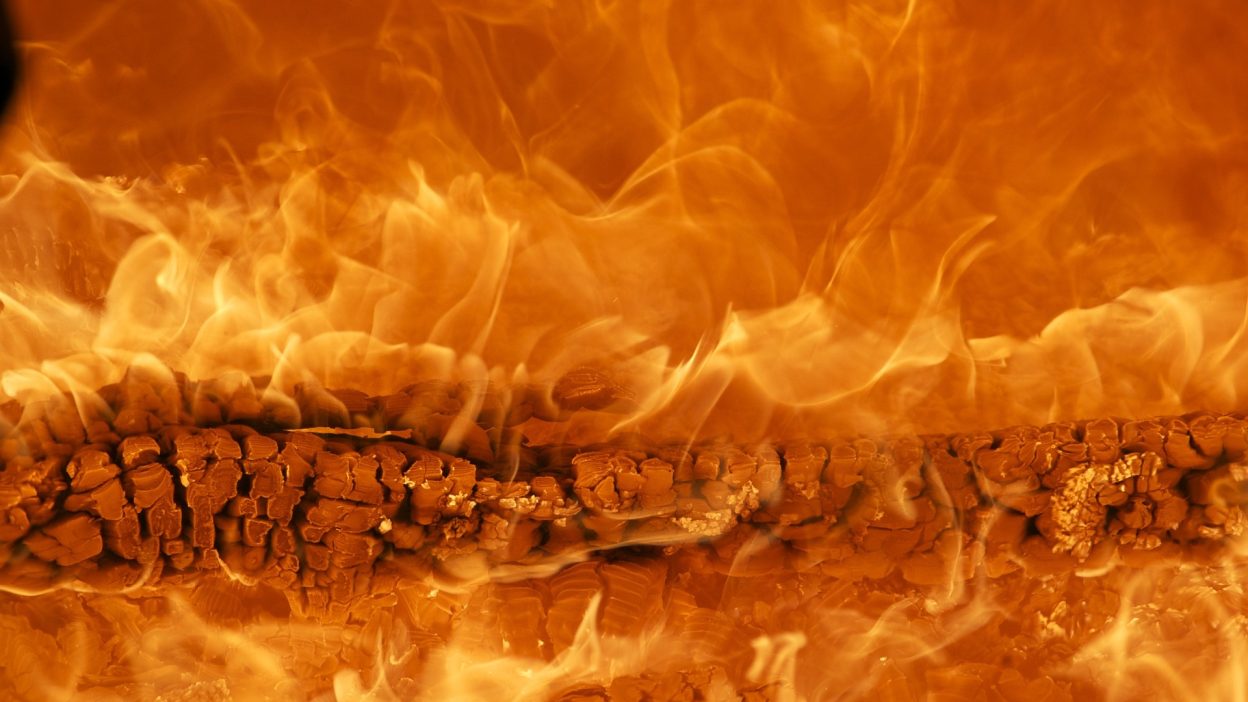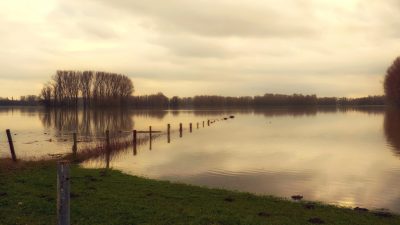The Inferno That Reduced Ontario to Ashes
1. The Day Matheson Disappeared: Canada’s Forgotten Wildfire Tragedy
On 29 July 1916, a raging wildfire engulfed the town of Matheson and several nearby communities in Ontario, Canada, leaving nothing but smouldering ruins in its wake. What started as small, scattered fires in the dense forests quickly merged into an all-consuming inferno, sweeping through the region at a terrifying pace. By the time the flames had finally died down, entire towns had been wiped off the map, and hundreds of lives were lost.
The Matheson Fire was not an isolated disaster—it was the result of a perfect storm of human negligence and natural forces. Unregulated logging, dry weather, and the complete absence of fire prevention measures had turned Ontario’s forests into a ticking time bomb. When strong winds fanned the flames, the fire spread so rapidly that residents had little to no time to escape.
In just a few hours, 500,000 acres of land were incinerated, and 13 communities were reduced to ash. The scale of destruction was so immense that it remains one of the deadliest wildfires in Canadian history. Even over a century later, this disaster serves as a chilling reminder of how human recklessness can turn nature into a weapon of mass destruction.
2. How the Fire Became a Monster: The Deadly Mix of Weather, Negligence, and Disaster
The Matheson Fire wasn’t just a natural disaster—it was a man-made catastrophe that could have been prevented. A combination of extreme weather, careless logging, and poor land management created the perfect conditions for a wildfire of unprecedented scale.
Firstly, Ontario was experiencing one of its driest summers on record. The lack of rainfall had turned the forests into a tinderbox, making them highly flammable. Even a single spark had the potential to ignite a massive blaze.
Secondly, irresponsible logging practices played a crucial role in fuelling the fire. Logging companies had cleared vast portions of land but had left behind piles of dry, discarded wood. These remnants acted as highly combustible material, allowing the flames to spread with deadly speed.
Lastly, there were no proper firebreaks, emergency response teams, or evacuation plans. Unlike today, there were no organised firefighting efforts to contain the flames. With no way to stop the advancing inferno, entire towns were left at its mercy.
This disaster exposed Canada’s failure to take fire safety seriously, a lesson that unfortunately continues to be ignored in modern times.
3. The Fire’s Devastation in Numbers: Deaths, Injuries, and the Scale of Destruction
The Matheson Fire left a trail of destruction so vast that its impact was immeasurable. Below are the key statistics that illustrate the sheer magnitude of the disaster:
- Death Toll: 223 Lives Lost, But Was the Real Number Higher?
The official death toll stands at 223, but historians believe the actual number could be much higher. Many bodies were completely incinerated, leaving no trace behind. It is likely that hundreds more perished, especially among settlers in remote areas. - Severe Injuries: Hundreds Left with Life-Altering Burns
Survivors who escaped the flames suffered horrific burn injuries, with little to no medical help available. Many endured excruciating pain due to a lack of proper treatment. - Towns Wiped Out: 13 Communities Reduced to Ash
The fire completely destroyed Matheson, Ramore, Iroquois Falls, Nushka, Porquis Junction, and several other settlements. Some were never rebuilt, leaving behind only the charred remains of a once-thriving region. - Half a Million Acres Burned to the Ground
The fire devoured 500,000 acres of forests, farmland, and homes, turning everything in its path into blackened wasteland. - Thousands of People Left Homeless
Families that survived the blaze were left with nothing but the clothes on their backs. The government’s response was slow and ineffective, leaving many to fend for themselves in makeshift shelters.
4. Trapped with No Way Out: The Horrifying Last Moments of the Victims
Eyewitness accounts of the Matheson Fire reveal scenes of absolute terror. When the firestorm reached the town, it was moving so fast that residents had no time to react.
Many fled toward the Black River, desperately hoping to escape. Some made it to the water, but the heat and smoke killed many before they could reach safety. Survivors recalled seeing people collapse mid-run, their bodies consumed by flames within seconds.
In other areas, people sought refuge in wells, underground cellars, or even shallow pits, but the fire’s intense heat suffocated them before the flames even reached them.
One of the most tragic stories involved passengers on a train caught in the disaster. As the fire advanced, the tracks became surrounded by flames, and the train was trapped with nowhere to go. The carriages became ovens, and many perished inside as the heat melted the metal.
5. The Survivors’ Nightmare: Life After the Matheson Fire
For those who made it out alive, survival was only the beginning of their suffering. Many had lost entire families, homes, and all their possessions.
A survivor named William Carter described how he watched his wife and children disappear into the flames, unable to save them. He escaped by running into a river but was badly burned and left with nothing.
Another survivor, Margaret Davies, recalled walking through what was once Matheson, only to find a landscape of corpses and ruins. She later described the town as “a graveyard of ashes and shadows”.
Many survivors suffered severe mental trauma, with some never speaking of the fire again. Their lives had been forever altered by a disaster that could have been prevented.
6. A Preventable Disaster: How Poor Land Management and Zero Fire Safety Led to Catastrophe
The Matheson Fire wasn’t inevitable—it was the result of human negligence. Several factors made this disaster worse than it should have been:
- Unregulated Logging Practices
The timber industry left behind vast amounts of dry debris, making the forests highly flammable. Had there been proper regulations, the fire might have been controllable. - No Firebreaks or Warning Systems
In modern times, controlled burns and firebreaks help slow down wildfires. In 1916, none of these measures existed, allowing the fire to spread unchecked. - No Evacuation Plans or Firefighting Response
When the fire struck, there was no organised effort to save residents. People were left to their fate, and many died because there was no plan to protect them.
7. The Forgotten Victims: Indigenous Communities and Poor Settlers Abandoned
- Indigenous Families Were Among the First to Die
Many Indigenous settlements were consumed by the flames, but their deaths were largely unrecorded in official reports. - Poor Settlers Had No Warnings or Rescue Efforts
Unlike wealthier areas, remote settlements received no warnings at all. Many were trapped and died before they even knew the fire was coming. - A Government That Turned Its Back on the Victims
Survivors accused the government of ignoring fire safety and failing to regulate logging companies. The lack of response left thousands to suffer on their own.
8. Have We Learned Anything? Why Canada Still Faces the Same Risks
Despite the devastation of the Matheson Fire, Canada still struggles with wildfires on a massive scale. The question is—have we truly learned from history, or are we doomed to repeat the same mistakes?
In recent years, Canada has witnessed some of its worst wildfires, with millions of acres burned and entire communities displaced. While modern technology and firefighting strategies have improved, the underlying problems remain alarmingly similar to those of 1916.
- Climate Change and Rising Temperatures
One of the biggest threats today is climate change. Rising temperatures have led to longer dry seasons, making forests more susceptible to wildfires. In the past, the fire was caused by extreme drought conditions, and today, the same pattern is repeating itself on an even larger scale. - Poor Forest Management
Just like in 1916, forestry practices remain a major issue. Logging companies continue to clear large areas of land and leave behind flammable debris, increasing the risk of wildfires. Although regulations exist today, they are often ignored or poorly enforced. - Underprepared Communities
Despite past disasters, many towns and settlements remain highly vulnerable to wildfires. Evacuation plans are often inadequate, and firefighting resources are limited in remote areas. The Matheson Fire exposed the failures of emergency response, and more than a century later, the same problems persist.
With climate change intensifying the frequency and severity of wildfires, the question remains—is Canada truly prepared for the next Matheson Fire? Or will history repeat itself with even deadlier consequences?
9. The Matheson Fire’s Legacy: A Forgotten Tragedy or a Warning for the Future?
Over 100 years have passed, but the Matheson Fire remains one of the deadliest wildfires in Canadian history. However, unlike other major disasters, it is rarely discussed, even within Canada.
- A Forgotten Chapter in Canadian History
While disasters like the Great Fire of 1825 and the Fort McMurray Fire of 2016 are widely studied, the Matheson Fire has been largely forgotten. Many Canadians today do not even know it happened, despite its horrific scale and loss of life. - A Lesson That Must Not Be Ignored
The fire stands as a powerful reminder of the consequences of poor land management and government negligence. If we fail to learn from it, we risk facing even worse disasters in the future. - The Unanswered Questions
The true death toll may never be known, and the voices of Indigenous and poor communities remain unheard. Will the Matheson Fire be remembered as just another historical tragedy, or will it finally be recognised as a warning that must be acted upon?
As Canada continues to battle increasingly destructive wildfires, the lessons of 1916 must not be ignored. Otherwise, another catastrophe is inevitable.
10. Conclusion: Will Canada’s Next Matheson Fire Be Even Deadlier?
The Matheson Fire was more than just a disaster—it was a man-made catastrophe that could have been prevented. More than a century later, the same mistakes are still being made, and wildfires are becoming more frequent and more devastating.
- Unchecked logging, poor fire management, and government inaction all contributed to the 1916 disaster.
- Today, climate change and human negligence continue to put thousands of lives at risk.
- Unless drastic measures are taken, it is only a matter of time before another fire of this scale occurs—or worse.
The question remains—has Canada truly learned from Matheson, or is it just waiting for the next great inferno to strike?
FAQs
1. What caused the Matheson Fire of 1916?
The fire was caused by a combination of drought, strong winds, and irresponsible logging practices, which left behind dry debris that fuelled the flames.
2. How many people died in the Matheson Fire?
The official death toll stands at 223, but the actual number is believed to be much higher, as many bodies were completely incinerated.
3. How big was the Matheson Fire?
The fire burned approximately 500,000 acres of land, destroying 13 towns and communities across Ontario.
4. Could the Matheson Fire have been prevented?
Yes. If there had been proper fire management, emergency response plans, and stricter logging regulations, the fire would not have spread so uncontrollably.
5. Is Canada still at risk of wildfires like Matheson?
Yes. With climate change, poor land management, and increasing droughts, Canada remains highly vulnerable to massive wildfires similar to Matheson.




